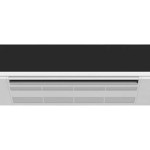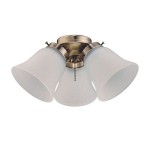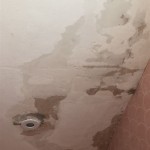Is Black Mould on Ceiling Dangerous? Understanding the Risks and Remediation
Black mould, often observed as dark or greenish-black patches on surfaces, particularly ceilings, is a common household concern. While not every dark stain is indicative of toxic mould, the presence of black mould, specifically *Stachybotrys chartarum*, is often associated with potential health risks. This article will explore the dangers posed by black mould on ceilings, identify factors contributing to its growth, and outline steps to mitigate its presence.
Mould thrives in damp, humid environments. Ceilings are particularly vulnerable due to their proximity to roofs, potential pipe leaks, and condensation. Understanding the potential risks associated with black mould exposure is crucial for maintaining a healthy living environment.
Understanding the Health Risks Associated with Black Mould
The primary danger of black mould lies in its ability to produce mycotoxins. These are toxic substances produced by certain types of mould that can trigger a range of adverse health effects. The severity of these effects varies depending on the individual's sensitivity, the duration of exposure, and the concentration of mould spores in the air.
Respiratory problems are among the most commonly reported health issues associated with black mould exposure. Inhaling mould spores can exacerbate existing respiratory conditions like asthma and allergies. Symptoms may include coughing, wheezing, shortness of breath, and nasal congestion. Prolonged exposure can even lead to the development of new respiratory sensitivities.
Individuals with weakened immune systems, such as infants, young children, the elderly, and those with pre-existing health conditions like autoimmune diseases or compromised respiratory systems, are particularly vulnerable to the adverse effects of black mould. Their bodies may be less able to fight off the effects of the mycotoxins, leading to more severe symptoms and potential complications.
Black mould exposure has also been linked to neurological symptoms in some individuals. These symptoms can include headaches, memory loss, difficulty concentrating, and mood changes. While the exact mechanisms by which mould affects the nervous system are still being investigated, some studies suggest that mycotoxins can disrupt brain function and contribute to these symptoms.
Skin irritation and allergic reactions are another potential consequence of exposure. Direct contact with mould spores can cause skin rashes, itching, and hives. In some cases, the mere presence of mould in the environment can trigger allergic reactions, even without direct contact.
It is important to note that not all black mould is *Stachybotrys chartarum*, and not all strains of *Stachybotrys chartarum* produce the same levels of mycotoxins. However, any visible mould growth should be addressed promptly to minimize potential health risks.
Identifying the Causes of Black Mould Growth on Ceilings
Effective mould remediation requires identifying and addressing the underlying cause of the moisture problem. Without eliminating the source of moisture, mould will inevitably return, even after thorough cleaning or removal.
Roof leaks are a common cause of mould growth on ceilings. Damaged or improperly installed roofing materials can allow water to penetrate the ceiling, creating a damp environment that promotes mould growth. Regular roof inspections and prompt repairs are essential for preventing leaks and mould problems.
Plumbing leaks, whether from leaky pipes in the attic or within the ceiling cavity, can provide a constant source of moisture for mould to thrive on. Even small, slow leaks can create ideal conditions for mould growth over time. Regularly inspect plumbing fixtures and pipes for signs of leaks, such as water stains or dripping sounds.
Condensation is another significant contributor to mould growth, particularly in bathrooms and kitchens. When warm, humid air comes into contact with a cold surface, such as the ceiling, condensation forms. If left unchecked, this condensation can create a persistently damp environment that encourages mould growth. Ensuring adequate ventilation in these areas can help reduce condensation and prevent mould problems.
Inadequate ventilation throughout the house can also contribute to mould growth on ceilings. Poor air circulation can trap moisture, creating humid conditions that are conducive to mould growth. Ensuring proper ventilation by opening windows regularly, using exhaust fans, and improving airflow throughout the house can help reduce humidity levels and prevent mould problems.
High humidity levels, regardless of the source, create an environment where mould spores can easily germinate and grow. Monitoring humidity levels with a hygrometer and using dehumidifiers to maintain a relative humidity level below 60% can help prevent mould growth. Addressing any sources of excess humidity, such as leaky faucets or improperly vented appliances, is also crucial.
Sometimes, previous water damage that wasn't properly addressed can lead to hidden mould growth within the ceiling structure. This type of mould growth can be difficult to detect until it becomes visible on the surface of the ceiling. Thoroughly inspect any areas that have previously experienced water damage for signs of mould growth, and consider professional mould testing if you suspect hidden mould.
Remediation and Prevention Strategies
Addressing black mould on a ceiling involves both removing the existing mould and preventing its recurrence. The appropriate course of action depends on the severity of the mould growth. Small areas of mould, less than 10 square feet, can often be handled by homeowners following proper safety precautions. Larger infestations typically require professional remediation.
When dealing with mould, always wear appropriate Personal Protective Equipment (PPE) to minimize exposure. This includes a respirator mask rated N-95 or higher to prevent inhalation of mould spores, gloves to protect skin from contact, and eye protection to prevent irritation. These measures are crucial in preventing respiratory irritation and allergic reactions.
Containment is essential to prevent the spread of mould spores to other areas of the house. Seal off the affected area with plastic sheeting and tape, and use a HEPA (High-Efficiency Particulate Air) filter to capture any spores that become airborne during the cleaning process. This helps to prevent the contamination of other areas of the home during the remediation process.
For small areas of mould, a solution of diluted bleach (1 part bleach to 10 parts water) can be used to clean the affected surface. Apply the solution to the mouldy area, scrub gently, and allow it to sit for several minutes before rinsing thoroughly. Always ensure adequate ventilation when using bleach, as it can release harmful fumes. Alternatives like vinegar or specialized mould cleaning products can also be used.
After cleaning, it is crucial to thoroughly dry the affected area to prevent mould from returning. Use fans and dehumidifiers to promote rapid drying, and consider removing and replacing any porous materials, such as drywall or insulation, that have been heavily contaminated with mould. This is because mould can penetrate porous materials, making them difficult to clean effectively.
Professional mould remediation is recommended for larger infestations, typically those exceeding 10 square feet. Professionals have the expertise, equipment, and training to safely and effectively remove mould, identify and address the source of the moisture problem, and prevent future mould growth. They also utilize advanced techniques like air scrubbing and negative air pressure to contain and remove mould spores.
To prevent mould growth, maintain a relative humidity level below 60% throughout the house. Use dehumidifiers in damp areas, ensure adequate ventilation, and promptly repair any leaks or water damage. Regularly inspect your roof and plumbing for signs of leaks, and address any issues immediately. These proactive measures can significantly reduce the risk of mould growth.
Improve air circulation by opening windows regularly, using exhaust fans in bathrooms and kitchens, and ensuring that vents are not blocked by furniture or curtains. This helps to reduce humidity levels and prevent the build-up of moisture that can lead to mould growth. Proper ventilation is a key component of mould prevention.
Consider using mould-resistant building materials, such as mould-resistant drywall and paint, in areas that are prone to moisture. These materials contain additives that inhibit the growth of mould, providing an extra layer of protection against mould problems. This can be particularly beneficial in bathrooms, kitchens, and basements.
When renovating or remodeling, take steps to prevent moisture problems. Ensure that all plumbing and roofing work is done correctly, and properly seal any gaps or cracks that could allow water to enter. Choose mould-resistant materials and ensure adequate ventilation to minimize the risk of mould growth. Proper planning and execution of renovations can significantly reduce the likelihood of future mould problems.

Is Black Mold On Bathroom Ceilings Dangerous Bioclean Ct

What Causes Black Mould On Ceilings

Is Black Mold On Bathroom Ceilings Dangerous Bioclean Ct

Ceiling Mold Growth Learn The Cause And How To Prevent It Environix

Black Mould On Walls Causes Symptoms Prevention Treatment

Ceiling Mold Growth Learn The Cause And How To Prevent It Environix

What Is Black Mould And Health Problems Can It Cause Fungi The Guardian

Black Mould How Dangerous Is It In The Home And Can Be Treated

Mold Los Angeles County Department Of Public Health Environmental

Black Mold On Your Bathroom Ceiling Read This First








